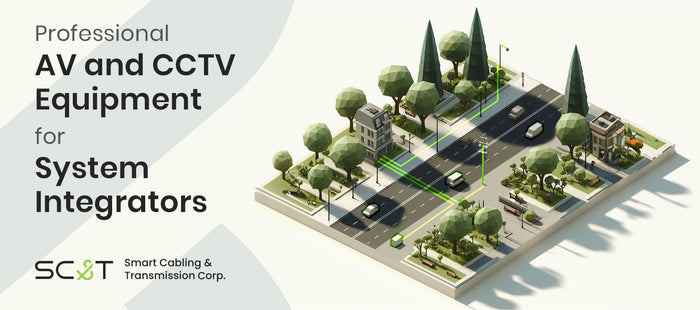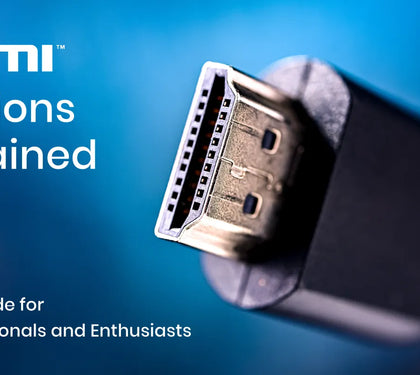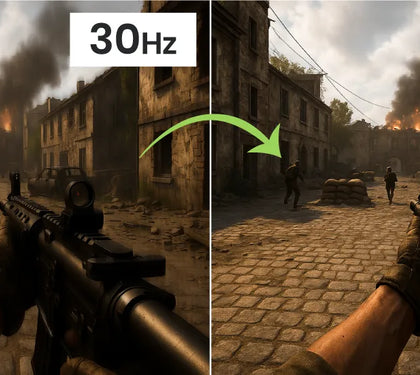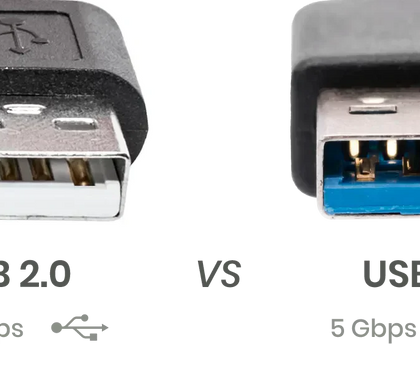Let’s think about what we need to control a computer. For instance, if you’re sitting at your desk browsing this article online, what do you need?
-
A mouse to scroll through the page
-
A keyboard to type your query into a search engine
-
A display to view the information and know what you're controlling
This brings us to the concept of KVM—Keyboard, Video, and Mouse.

Keyboard, Video, and Mouse
KVM is essential for controlling a computer. The term “Keyboard, Video, and Mouse” refers to the fundamental tools needed to interact with a computer, allowing a user to input commands, view output, and maintain control. In simple terms, KVM technology enables users to control one or even multiple computers remotely or locally.
In KVM systems, these three elements are integrated, allowing users to manage one or more computers from a single station. For example, a user might need to control several computers in different rooms. KVM technology makes it possible to handle the keyboard, video, and mouse signals simultaneously, so the user can operate each computer as if they were sitting right in front of it. This approach provides seamless control and simplifies interactions with multiple systems.

Key KVM Equipment and Applications
To understand KVM applications, we first need to revisit the key principles of AV (Audio/Video) transmission. Since KVM is an extension of AV technology, the only difference is that KVM adds control signals. There are four main types of AV transmission equipment: one-to-many (switcher), many-to-one (splitter), many-to-many (matrix switcher), and one-to-one (extender).

KVM transmission equipment follows the same logic, solving the problem of transmitting control signals across computers. The four common types of KVM devices include:
-
One-to-many (KVM switch)
-
Many-to-one (KVM splitter)
-
Many-to-many (KVM matrix)
-
One-to-one (KVM extender)

KVM Switch
One of the most common KVM devices is the KVM switch. It allows a user to control multiple computers using a single keyboard, monitor, and mouse, which reduces workspace clutter and simplifies management. A KVM switch enables users to switch between different computers without the need for separate peripherals for each one, making it highly efficient. This is particularly useful in data centers, offices with multiple workstations, or home setups with several computers, as it saves hardware costs, space, and time.

KVM Splitter (Sharing/Reverse KVM)
Although less common, KVM splitters allow multiple control points to manage a single computer. However, due to the limited transmission range of HDMI (32–50 feet) and USB (9.8–16.4 feet), this setup may require the use of a KVM extender for larger spaces.

KVM Matrix
A KVM matrix is a many-to-many device that connects multiple keyboards, mice, and monitors, enabling the control of multiple computers from any point. With this setup, users can assign which computer they are controlling with each set of peripherals, providing flexibility in larger, more complex environments.
KVM Extender
A KVM extender solves the issue of distance by allowing remote control of computers in different rooms or even different buildings. These extenders typically use Ethernet or fiber optic cables to cover long distances—up to 328 feet for Ethernet and as far as 19,685 feet for fiber optics. KVM extenders can be used independently or in combination with other KVM devices, making them a versatile solution for extending control over long distances.

Important Specifications When Choosing KVM Equipment
When selecting KVM transmission devices, here are the most important specifications to keep in mind:
Video Quality
When selecting a KVM device, it’s essential to choose one that supports the video resolution you need, especially if you are working with high-definition displays.

4K60Hz HDMI CAT6/Fiber KVM Extender - HKM01-4K6G
- Resolution up to 4K60Hz 4:4:4.
- Signal extension up to 328ft (100m).
- 60km over single mode fiber optic.
- Built-in local loop out for an extra HDMI display at TX side.
- Built-in 4 USB ports at RX unit.
- Supports audio, RS232, IR extension.
Transmission Distance
If you're using an extender, transmission distance is a key consideration. Make sure the KVM extender or switch can cover the required distance without signal loss. This is especially important for setups that span large rooms or different floors.
Here’s a tip: the distance often depends on the type of cable being used. With current technology, the two main options are fiber optic cables and Ethernet cables. For distances over 100 meters, we recommend using a fiber optic extender. A few extenders can support both Ethernet and fiber optic cables, so be sure to carefully check the supplier’s specifications.

Video Interface
You should also consider the types of connections your equipment uses, such as HDMI, DisplayPort, or USB, to ensure compatibility. While it's possible to use adapters, like a DP to HDMI converter, to make connections work, we recommend using the device’s native interfaces whenever possible. Mixing different brands or interface types may lead to compatibility issues.

Audio Specifications
Audio is often overlooked in KVM transmission devices because most mainstream video interfaces, such as HDMI and DisplayPort, already include audio. However, in certain scenarios where you need audio-video separation or audio embedding, it’s important to pay special attention to the audio specifications. For example, if you want your audio to play through external speakers, or if you need your microphone to transmit sound back to your computer via a 3.5mm audio interface for use with applications like Google Meet or Skype, audio specifications become crucial.
At SC&T, our KVM extenders clearly specify the audio connection details, ensuring users understand the available features and limitations.

Switching Speed and Latency
In applications requiring quick response times, consider the switching speed and latency of the KVM device.
Conclusion
In simple terms, KVM is a basic method for controlling computers. KVM transmission devices allow users to switch, distribute, manage matrices, and extend control over computers.
SC&T specializes in manufacturing audio-visual and KVM equipment. Our main products include KVM extenders, but we also offer KVM switches and KVM matrix systems. If you can't find the equipment you're looking for at our US website SC&T Supply (sct-supply.com), you can visit our official website here: SC&T - Smart Cabling & Transmission Corp. (sct.com.tw).

Explore Our KVM Extender Setup Video
In this video, you will learn about the full performance and operational instructions of the HKM01-4K6G, including:
-
One-to-one / Multi-to-multi transmission
-
Setting the channels using DIP switches
-
How to connect cables and equipment
-
How to connect audio equipment
-
Full functionality demonstration
SC&T KVM Equipment
SC&T specializes in producing AV and KVM devices, including KVM extenders, switches, and matrix systems. Our products are available on our online store, and for any equipment not listed, feel free to contact us at info@sct-supply.com.
-
Full Range of KVM Extenders: KVM Extender Solutions
-
KVM Switches: 4 x 1 HDMI KVM Multiviewer Seamless Switcher
More KVM-Related Knowledge
For more information about KVM over IP: KVM over IP vs. Non-IP KVM Matrix: Advantages and Comparison





